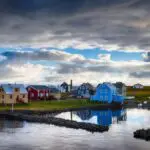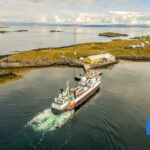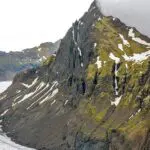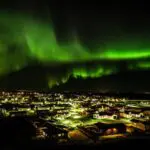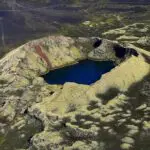The Icelandic language is a fascinating and unique language spoken by around 330,000 people, primarily in Iceland. With roots in Old Norse, Icelandic has managed to maintain its linguistic purity over the centuries due to Iceland’s isolation from other countries.
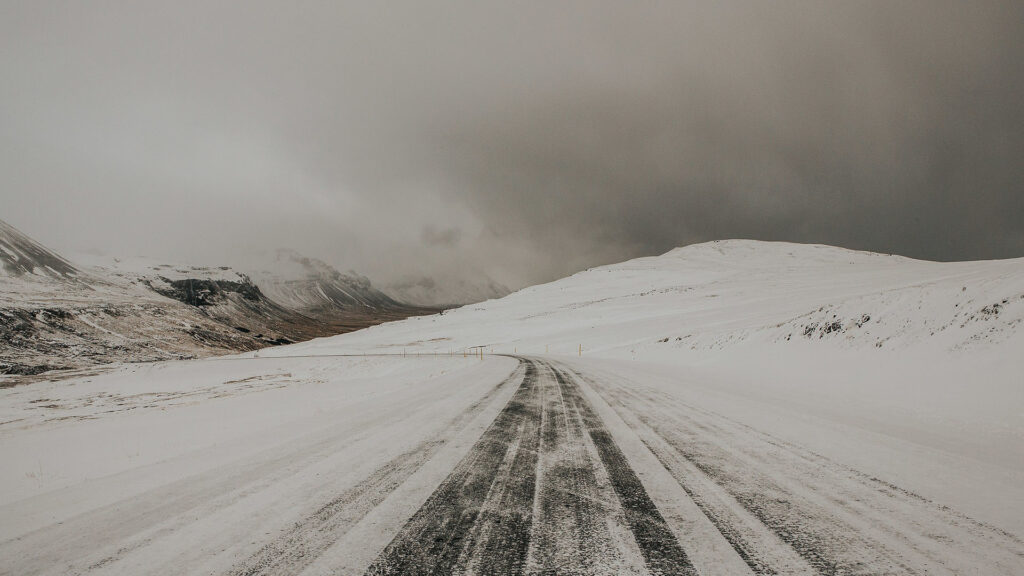
This blog post will delve into the past and characteristics of the Icelandic language, as well as its current usage and preservation efforts. Whether you’re a linguist, a traveler, or simply interested in learning more about this unique language, there’s something for everyone in this post.
Despite only about 330,000 speakers, Icelandic is by no means the language with the fewest speakers, even if it is sometimes said it is perpetually on the verge of extinction. The Atlas of World Languages of UNESCO identifies 64 languages as critically endangered. Many of them have only 1 or 2 speakers. Thankfully the Icelandic language isn’t there.
What is Icelandic?
Icelandic is the language the people of Iceland speak. It is derived from old Norse, a common Scandinavian language spoken during and before the Viking age and until the 15th century.
The Proto-Norse language developed into Old Norse around the 8th century. Old Norse began to develop into the modern North Germanic languages in the mid-to-late 14th century.
The 12th-century Icelandic lawbook Grágás (Grey Goose) states that Icelanders, Swedes, Danes, and Norwegians all spoke the same language – called dönsk tunga (Danish tongue) there. It was also called norrænt mál (northern speech).
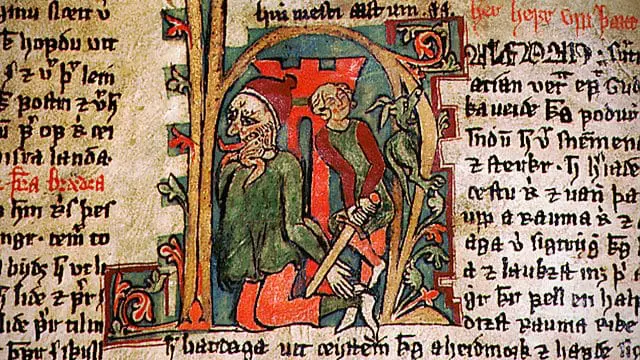
Old Icelandic and Old Norwegian were closely related and formed together what was called Old West Norse. Settlers also spoke old West Norse in Greenland, the Faroe Islands, Ireland, Scotland, the Isle of Man, northwest England, and Normandy. Old East Norse was spoken in Denmark, Sweden, Kievan Rus’, eastern England, and Danish settlements in Normandy.
Old Norse was the most widely spoken European language in the 11th century, stretching from Vinland in the west to the Volga River in the east. It survived the longest in Kievan Rus’ in Veliky Novgorod, probably until the 13th century.
Icelandic and Faroese grammars have changed the least from Old Norse over the last thousand years. In contrast, Icelandic and Faroese pronunciations have evolved significantly from Old Norse. Faroese culture has been influenced by Danish rule of the Faroe Islands.
Modern Icelandic is written using the Old Norse phonemic writing system. Modern Icelandic speakers can read Old Norse, which differs slightly in spelling, semantics, and word order. However, Icelandic pronunciation, particularly of vowel phonemes, has changed at least as much as the other North Germanic languages.
Modern Icelandic
The language is conservative in comparison to most other Germanic languages. While many have significantly reduced inflection levels (particularly noun declension), Icelandic retains a four-case synthetic grammar (similar to German, but substantially more conservative and synthetic). A wide range of irregular declensions distinguishes it. Icelandic vocabulary is also extremely conservative, with the country’s language regulator actively coining terms based on older Icelandic words rather than accepting loanwords from other languages. Because the written language has remained relatively unchanged, Icelandic speakers can read classic Old Norse literature from the 10th to 13th centuries (such as the Eddas and sagas) with relative ease.
Even though Icelandic is considered more archaic than other living Germanic languages, particularly in terms of morphology, other grammatical aspects, and lexicon, the language has undergone significant changes. The pronunciation of vowels, for example, changed dramatically between the 12th and 16th centuries.
Protecting the language
The Danish Rasmus Rask (1787-1832) came to Iceland in the early nineteenth century. He was a brilliant linguist who had always wanted to visit Iceland. Finally, in 1813, he arrived and spent two years learning the language.
He is regarded as the father of comparative linguistics. Linguists in the past drew conclusions about the relatedness of languages based on similarities in individual words. Rask pointed out that these are frequently loan words from other languages and thus reveal nothing about the language’s origin. Instead, he compared grammatical analogies and demonstrated, for example, the Germanic a-mutation.
Rask became convinced that Danish influence in Icelandic should be reduced and that Icelandic culture should be strengthened. When he returned to Copenhagen, he founded Hið íslenska bókmenntafélag (The Icelandic Literary Society), which still exists today. Rask was the organization’s first president.
Icelanders have, in many ways, sought to protect the language from foreign influence, for example, by creating new words instead of taking in foreign ones (usually English).
Most Icelanders today speak fairly good English, at least enough to help you if you need it, so you don’t need to learn Icelandic before your travel to Iceland.
Linguistic purism
Linguistic purism in Icelandic refers to the policy of creating new words from Old Icelandic and Old Norse roots to discourage new loanwords from entering the language.
The effort began in the early nineteenth century, at the dawn of the Icelandic national movement, to replace older loanwords, particularly Danish loanwords. It continues today, focusing on English words. It is widely held and the dominant language ideology in Iceland. The Icelandic Government fully supports it through the Árni Magnússon Institute for Icelandic Studies, the Icelandic Language Council, the Icelandic Language Fund, and an Icelandic Language Day.
Despite the noble idea behind purism, it can lead to arrogance, especially on social media. Some people believe everyone should write 100% correct Icelandic, and there is no room for innovation or error.
One evidence of Icelandic being a living language is our ability to create new words, play with their meaning, and make silly abbreviations. The abbreviations (such as fössari for föstudagur/Friday) invoked extreme annoyance in some people. While for others, writing Icelandic wrong shows a lack of intelligence.
This is, of course, not true, as social media has forced people to start writing when they have, perhaps, never written anything since elementary school.
New Icelandic Words
Together with the Icelandic Language Institute, organizations and individuals in many specialist areas propose and use new technical lexis, diversifying the Icelandic lexicon. It is common to revive old words that have fallen out of use but have a similar meaning or are in the same semantic field when introducing words for new or modern concepts. For example, the word sími, an old word for “long thread,” was brought back with a new meaning: “telephone.” Alternatively, new compound words like veðurfræði (“meteorology”) can be formed by combining old words (in this case, veður “weather” and friæði “science”). Thus, Icelandic speakers can quickly deconstruct many words to find their etymologies; indeed, compound words are common in Icelandic.
The Icelandic Language Institute (íslensk málstöð), founded in 1985, was in charge of language planning and preservation in Iceland. The Icelandic Language Institute was a department within Iceland’s Ministry of Education, Science, and Culture. Its role was to provide official answers to questions about the Icelandic language and benchmarks and guidelines for Icelandic educators.
Beginning in 1997, The Icelandic Language Institute developed an internet database containing 52 special glossaries compiled for use in specific areas of focus and specialized words. While all of these glossaries include Icelandic words, some are bilingual and include terms from English, Danish, Norwegian, Swedish, German, and French, among others.
Two websites worth mentioning are Málið (Language) and the Nýyrðavefur (New Word Web). Málið was published on the Day of the Icelandic Language a few years ago and offers free access to dictionaries, mostly Icelandic, but some bilingual, as well as the etymology dictionary of Icelandic.
In 2006 the Icelandic Language Institute merged with four other institutes to form the Árni Magnússon Institute for Icelandic Studies.
We’re Still Creating Words
Every year the Icelandic National Broadcasting Service RÚV asks people to help them choose the word of the year. The words available to choose from are not necessarily new ones, as the words are in some ways defining for the year that is passing (such as “pandemic” or “unprecedented” in 2020). The word chosen by Icelanders was “þriðja vaktin“, or the third shift.
Of course, that is a concept and not a word, but it represents the mental burden in family and household maintenance that falls mainly on one person. In heterosexual relationships, it often affects women more than men.
Another word high on the list was “inngilding”, a translation of the English word “inclusion.”
The Word of The Year at Árni Magnússon Institute
The Árni Magnússon Institute for Icelandic Studies also chooses the word of the year. One of the institute’s projects is Risamálheildin or The Giant Linguistic Unit. The unit contains more than 2.4 billion words, mainly obtained from the texts of web and print media, social media and official documents. By comparing the frequency of words in the past year and the previous years, it is possible to call up a list of new words or words that occurred much more often in the past year than in previous years. The word of 2023 was innrás (invasion) due to Russia’s invasion of Ukraine.
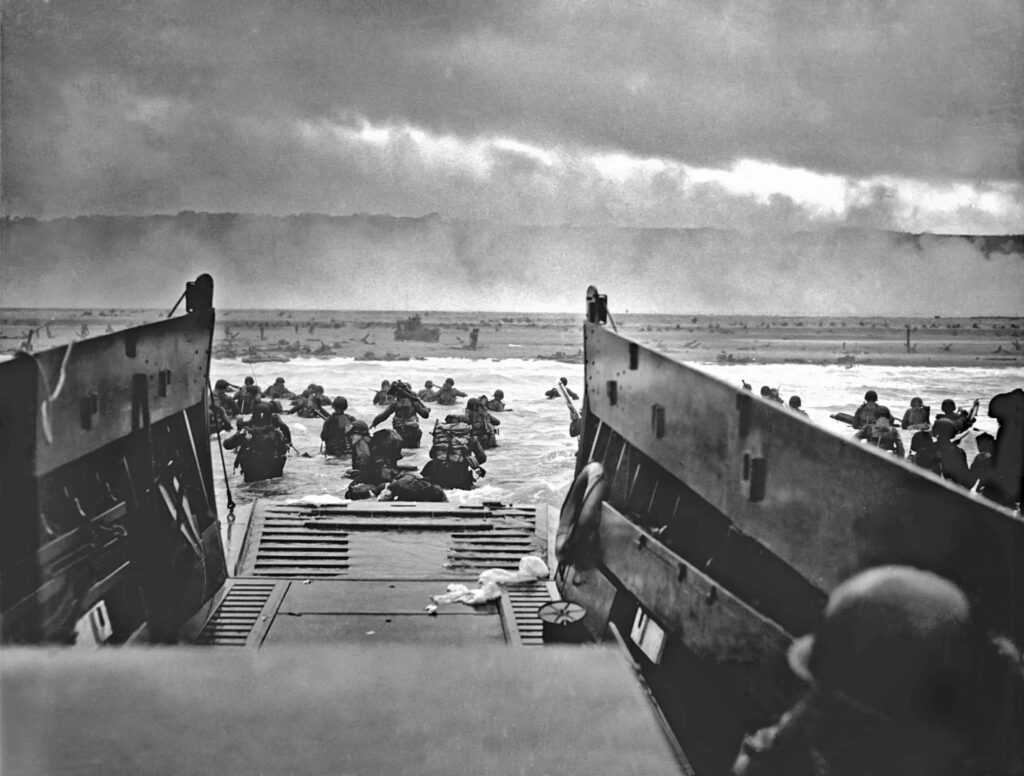
The Árni Magnússon Institute mentioned that a few new words were created last year, but none was used as much as “innrás.” An example of new words are:
Kærleikskæfing. Literally love-strangling. Translation of the English term “love bombing”. Love bombing is a controlling and manipulative tactic most often used by narcissists and abusive people.
Kúltúrbarn. Literally culture-child. Translation of the English term “nepo baby.” A nepo baby, short for nepotism baby, is the child of an actor, musician, producer or other industry insiders who has likely benefitted from their parents’ fame or connections while launching their own career.
Kynþáttamörkun. Literally race-marking. Translation of the English term “racial profiling.” Racial Profiling refers to the discriminatory practice by law enforcement officials of targeting individuals for suspicion of crime based on the individual’s race, ethnicity, religion or national origin.
Specialized Icelandic Words
We’ve told you about Icelandic words such as gluggaveður (window weather), a widespread phenomenon during winter, and a few particular Icelandic words such as tölva (computer).
In the Specialized Word Database mentioned above, you can find Icelandic words that have been created for almost everything you could think of. It is not just one person creating the words, but linguists, academics, and people from within the sector the new terms come from. It has taken some time, but you will find an Icelandic word for almost everything there.
The databases which comprise the Specialized Word Database come from:
- International Politics and Political Sciences
- Behavior analysis
- Glossary of aluminum terms
- Architecture
- Geotechnics
- Environmental technology
- Physics
- Genetics
- Epidemiology
- Space Science
- Computer Science
- Economics
- Econometrics
- Needlework
- Geography
- Pharmacology
- Medicine
- Law
- Grammar
- Education Science
- Metal Industry
- Visual Arts
- Marine animals
- Fishing issues
- Concrete glossary
- Administration words
- Astronomy
- Speech therapy
- And many more
The Icelandic Naming Committee
Iceland has strict laws regarding personal names that are intended to protect the Icelandic language and naming traditions. According to the Personal Names Act of 1996, the Icelandic Naming Committee must approve all names used in Iceland. It ensures that new names align with the country’s linguistic and cultural heritage.
The main rule is that all names must be able to decline according to the Icelandic grammar, which means that they must fit in the Icelandic case system and that the name should be able to be declined in the four cases (nominative, accusative, dative, and genitive).
The Committee has a list of approved names, including traditional Icelandic names and a limited number of foreign names that have been approved in the past.
Suppose parents want to give their child a name, not on the approved list. In that case, they must submit a request to the Committee, along with documentation that the name is commonly used in the country of origin or has historical or literary significance. The Committee will then decide whether to approve the name or not.
In addition to the rules for first names, there are also regulations for surnames. In Iceland, individuals typically use a patronymic system, where the father’s first name is used as the child’s last name, with the suffix “-son” for a son or “-dóttir” for a daughter.
Gender Self-Identification Laws
In 2019, Iceland passed new legislation regarding gender self-identification that further simplifies and streamlines the process for individuals to change their legal gender. The new legislation, enacted in January 2020, allows individuals over 14 to legally change their gender by submitting a self-declaration form to the National Registry. Individuals no longer need to wait until 18 to change their legal gender.
The new legislation also removes the requirement for legal guardians to give their consent for individuals under 18 to change their legal gender, allowing young people to make the decision for themselves.
The self-declaration form still only requires the individual’s signature, and there is no requirement for medical or psychological evaluations.
The new legislation also allows individuals to change their name along with their legal gender, allowing for a third gender category rather than just male or female. This means that people of any gender can now take up names traditionally assigned to males or females, regardless of their registered gender.

